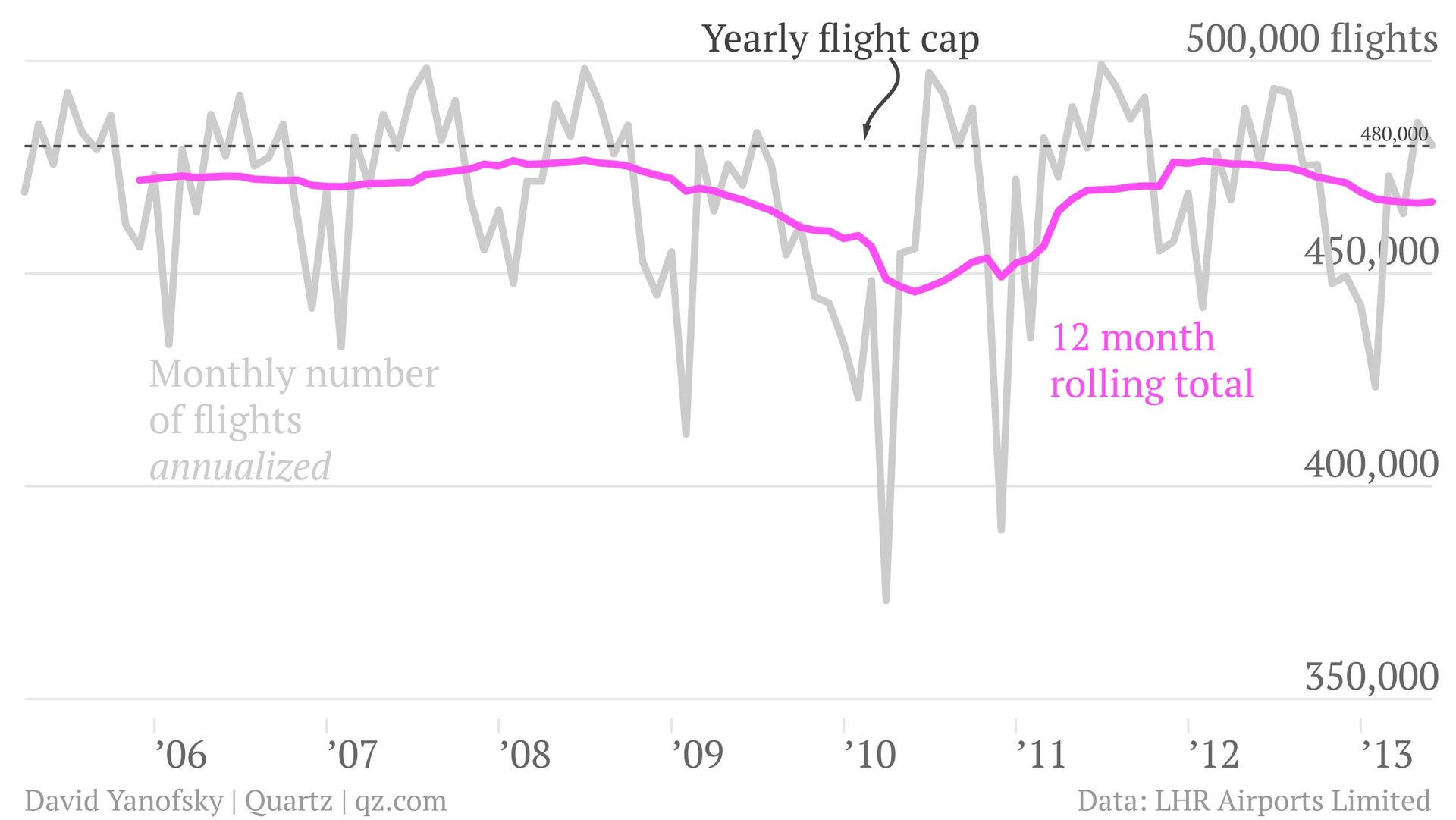Doing the math on why Heathrow wants another runway
Heathrow Airport Holdings, the privately owned managing authority of one of the world’s busiest airports, London Heathrow Airport, is petitioning the UK government to expand its capacity and its business by building a third runway. The move is a response to an Airports Commission request for ideas on how to tackle London’s insufficient airport capacity in the longterm.


Heathrow Airport Holdings, the privately owned managing authority of one of the world’s busiest airports, London Heathrow Airport, is petitioning the UK government to expand its capacity and its business by building a third runway. The move is a response to an Airports Commission request for ideas on how to tackle London’s insufficient airport capacity in the longterm.
The authority has offered three location proposals for construction (pdf), each with different environmental, budgetary and logistical costs. All of them would give Heathrow at least 48% more capacity.
The proposal estimates a three-runway Heathrow will serve 570,000 flights and 100 million passengers in 2030. In 2012, Heathrow served 467,110 flights and 70.3 million passengers, according to airport data.
In its current configuration, Heathrow is limited to serving 480,000 flights a year. In 2012, Heathrow utilized 97% of their cap. Military, diplomatic, emergency flights (and due to an accounting quirk, any flight on February 29) are exempted from the limit, but cargo, mail and government flights are not.
The plan estimates that a third runway would allow for the limit to be increased to between 702,000 and 740,000 flights, depending on the runway’s final location, providing enough capacity until 2040.
The proposal is not without controversy. Some residents of the area would be forced to leave their homes. Others are concerned about increased noise pollution from arriving and departing flights. Gatwick and Stansted–two other London area airports–would prefer to expand their service from one runway to two as a way to expand the city’s flight capacity.
Boris Johnson, the mayor of London, has his own plan. He wants to shut down Heathrow permanently, develop a new town on its site, and build an entirely new airport in another location.